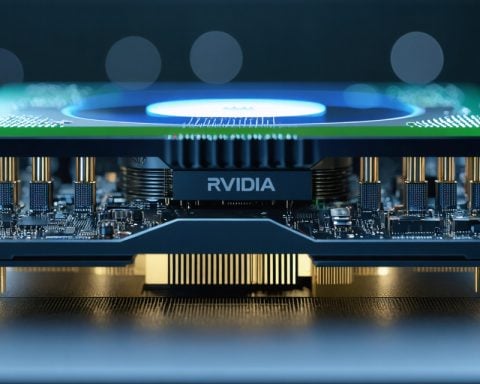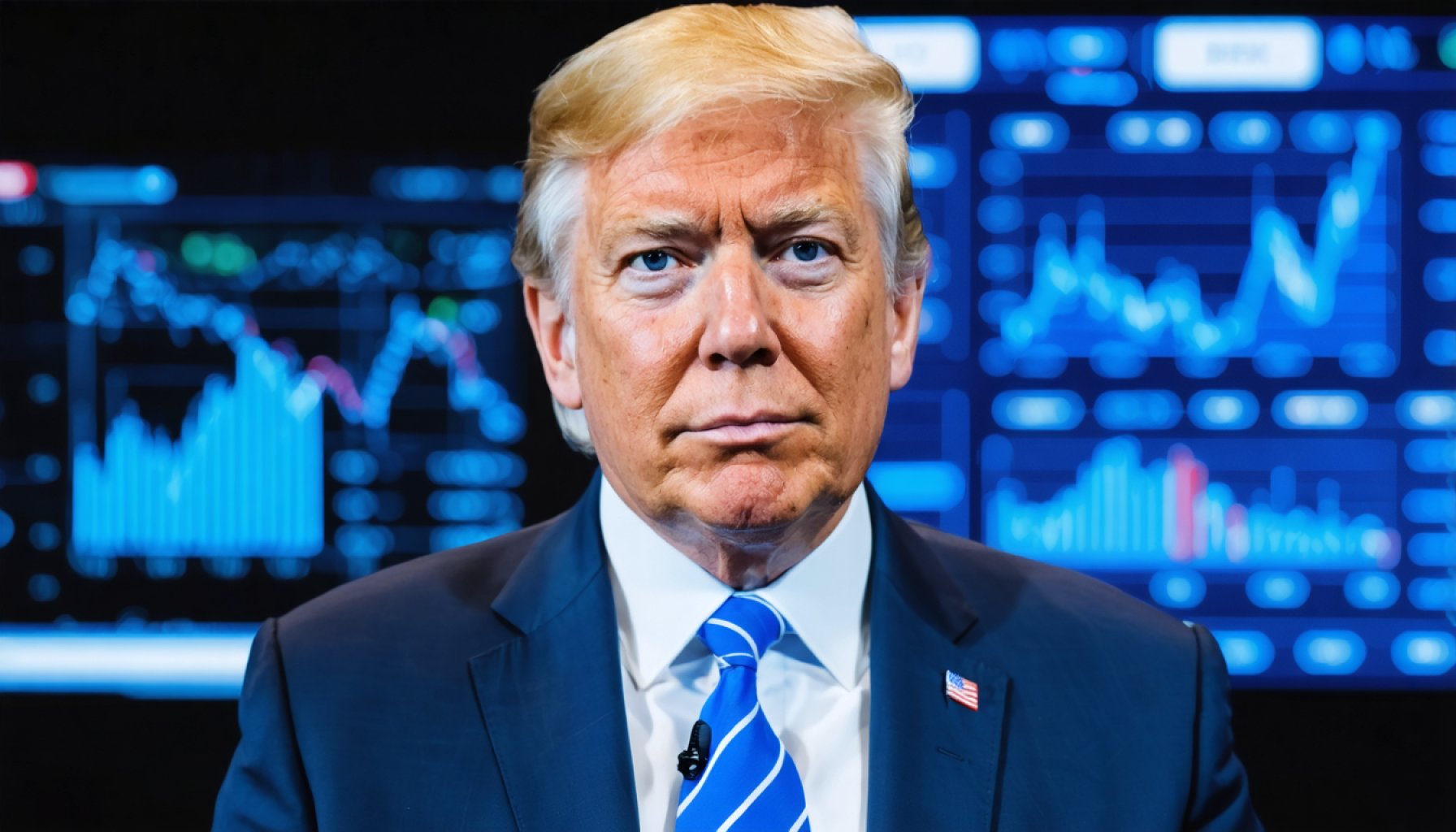- Microsoft introduces Majorana 1, a quantum chip with topological superconductivity, signaling a new era in computing.
- Topoconductors protect qubits, enhancing precision in quantum computing, which uses qubits that hold multiple states simultaneously.
- The chip’s potential includes breakthroughs in fields like engineering and ecology, enabling innovations such as self-healing infrastructure.
- CEO Satya Nadella envisions a compact chip surpassing current global computing capacities.
- While stock markets reacted positively, Microsoft remains cautious, continuing to develop Majorana 1 for future applications.
- Other companies, including Nvidia, are also advancing toward practical quantum solutions, indicating industry-wide momentum.
- The quantum frontier promises vast possibilities, reshaping the digital realm and beyond.
A bold new vision emerges from Microsoft as they reveal a chip that might rewrite the rules of computing. Known as Majorana 1, this quantum computing marvel heralds a groundbreaking advancement: topological superconductivity. Imagine a new state of matter, beyond solids, liquids, and gases, where electrons dance in perfect harmony, unhindered and unwavering.
This innovation doesn’t just tinker with numbers; it transforms them. Classical computers rely on binary bits, mere 0s and 1s. In contrast, quantum computers employ qubits—units that embody dual possibilities in a single moment. However, the more qubits, the larger the room for error. Enter Microsoft’s solution: topoconductors, a material that shields these qubits, making them resilient and precise.
The implications are astonishing. Picture a palm-sized chip housing a million qubits, enabling calculations beyond the reach of all traditional computers combined. The prospects could revolutionize fields from engineering to ecology, fostering innovations like self-healing infrastructure and sustainable technologies.
Microsoft’s Chief Executive, Satya Nadella, paints a vivid picture: “Imagine a chip that fits in your hand yet solves problems beyond the capacity of today’s global computing prowess.”
While stock markets perked up on the announcement, with related shares like D-Wave Quantum seeing significant jumps, Microsoft isn’t rushing its creation to market just yet. The journey with their Majorana 1 chip continues—part of a future still taking shape, yet tantalizingly closer.
Although some industry leaders express caution about quantum’s immediate impact, landscapes are shifting. Rival companies like Nvidia are also accelerating efforts, narrowing the gap to practical quantum solutions.
The takeaway is clear: the quantum frontier beckons, promising a horizon filled with unprecedented possibilities for our digital realm and beyond.
Why Microsoft’s Majorana 1 Chip Could Be the Future of Quantum Computing
How-To Steps & Life Hacks
For those new to quantum computing concepts, here’s how you can grasp its basics:
1. Understand Quantum Basics: Study basic quantum mechanics principles—superposition, entanglement, and quantum gates.
2. Follow Leading Companies: Track companies like Microsoft and IBM, as they regularly publish white papers and tutorials on quantum advancements.
3. Utilize Online Courses: Platforms like Coursera and edX offer courses on quantum computing from leading institutions.
4. Experiment with Simulators: Before dealing with actual qubits, experiment using quantum simulators like Qiskit or Microsoft’s Quantum Development Kit.
Real-World Use Cases
The Majorana 1 chip promises transformative applications:
– Drug Discovery: Enabling simulations of molecular interactions at unprecedented scales.
– Material Science: Facilitating the design of new materials with enhanced properties like superconductivity.
– Cryptography & Security: Offering breakthroughs in quantum encryption, making current encryption technologies obsolete.
Market Forecasts & Industry Trends
Quantum computing is expected to become a $64.98 billion industry by 2030, according to industry analyses. Companies like Google, IBM, and Microsoft are leading the charge in applying quantum computing to solve real-world problems. Investors are increasingly allocating resources to support quantum tech startups, underscoring its promising future.
Reviews & Comparisons
The Majorana 1 is up against:
– Google’s Sycamore: A recent processor that completed a complex computation task in 200 seconds, which would take classical computers 10,000 years.
– IBM’s Quantum Processor: Recently launched a 127-qubit processor called Eagle.
Controversies & Limitations
Quantum computing is not without its challenges:
– Error Rates: High error rates in qubit operation remain a hurdle.
– Temperature Requirements: Maintaining a stable quantum state requires temperatures near absolute zero.
– Practical Applications Yet to Become Mainstream: While theoretical, many applications aren’t realized or proven at scale.
Features, Specs & Pricing
While specific specs of the Majorana 1 remain under wraps, it’s designed to house a million qubits in a palm-sized chip. Pricing information is unavailable as it is not yet commercialized.
Security & Sustainability
Quantum computers promise to enhance data encryption exponentially while also offering the tools needed to tackle sustainability challenges, like cutting down on the energy required for complex computations.
Insights & Predictions
Experts predict we will see practical quantum computing applications in the next 5–10 years. Microsoft is positioning Majorana 1 as a pioneering product in the drive towards fault-tolerant quantum computing.
Tutorials & Compatibility
As quantum computing evolves, Microsoft’s Quantum Development Kit helps developers familiarize themselves with the technology. Compatibility with classical systems remains a core focus.
Pros & Cons Overview
Pros:
– Revolutionary computational capabilities.
– Potential to solve complex, unsolvable problems.
– Significant industry and academic interest.
Cons:
– Requires ultra-low temperatures to maintain qubit stability.
– Still in infancy with uncertain timelines for commercial availability.
Actionable Recommendations
1. Stay Informed: Follow major announcements through Microsoft‘s press releases and industry publications.
2. Skill Up: Learn quantum computing technologies to future-proof your career.
3. Invest Strategically: Consider investing in quantum computing technologies, keeping in mind the potential exponential growth of the industry.
Readers eager to keep a pulse on this fascinating field should align their strategies with advancements in quantum computing, actively participate in learning opportunities, and anticipate the profound shifts quantum computing will introduce across various sectors.













